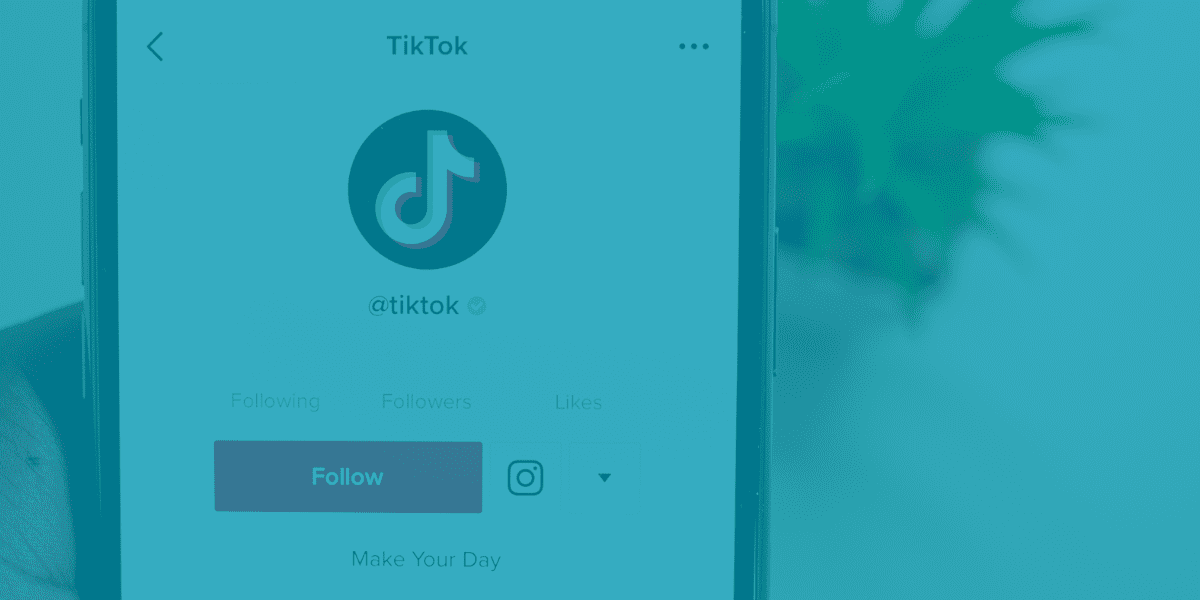Buyer personas are a mix of art and science and are created through market research, data collection, knowledge of the business, and creativity. This guide outlines the 5 major market research and data collection tactics that we use to create our buyer personas.
Want to learn more about what a marketing persona is and how it can help with your marketing? Check out our article Understand Your Audience with Buyer Personas and get an in-depth understanding of the different character groups in a persona.
#1 - Pre-Existing Customers
Customer data is the lifeblood of any organization in 2022. These data sets provide insights into your target demographic’s behavioral markers to help your organization influence their buying journey. Segmentation, surveys and interviews, and clustering algorithms are three research tactics that can be used to derive valuable behavioral insights from your customer data. Below is a guided explanation on how to get started with each of the 3 research tactics.
Segmentation
For organizations that already have customer data in a Customer Relationship Management (CRM) system or in a database, segmentation is one of the best places to start. This first-party data is so valuable because people have disclosed their information and self-identified, which is a great indicator that they are already highly engaged with your brand.
You can gain a lot of insight from your database, we always start by reviewing the data at a high-level and then begin segmenting users by user attributes to get a better idea of the breakdown of your audience. When you group your data by a specific value you can see what is the most common. For example, if you are collecting age, state, or job title, we like to create a pivot table in excel to review the counts for each of these attributes. This allows you to begin to get a sense of what your audience has in common.
Our team will review a process to get your datasets cleansed, appended and back to working condition. Some deliverables that you may receive are, an outlined process to build a data dictionary, list of data append methods specific to your situation, baseline metrics report. All completely complementary to you. Learn more today!
Surveys & Interviews
In addition to combing through data you already have, it is important to always be gathering new information about your customer base. Surveys and interviews are a really great way to get a better understanding of the WHAT section of your buyer persona that we discussed in the last blog. Remember, this section is all about the customers’ goals, challenges, & pain points.
Sometimes it is hard to derive this specific information from databases. Being able to ask these questions is a valuable way to learn more about your ideal buyer, so make sure that when creating surveys or interview questions you have a well-defined purpose. To get started here is a list of questions we like to ask in customer surveys or interviews:
1. What are your biggest challenges?
2. Why did you choose us?
3. What does success look like to you?
4. What problem did we solve for you?
5. What could we have done better?
6. What are your future goals?
7. What made you go with our product/service?
Segmentation clusters are a whole area of statical marketing analysis that we wouldn’t be able to do justice to in this one post. If you are interested in learning more about clustering models and how to create your own, check out this post from our friends at CXL: https://cxl.com/blog/user-personas/
#2 - Social Listening
When you’re ready to start getting insight into potential customers who haven’t engaged with your brand yet, social listening is a useful step. Social Listening is the process of collecting and analyzing conversations that your target audience is having online. Social listening has a host of use cases and benefits including brand monitoring, customer engagement, competitor research, crisis management, and beyond, but for our purposes today we’ll discuss how to use social listening for your persona creation. Social listening enables you to analyze unbiased conversations your target audience is having about their pain points, challenges, and goals, this information could be the spark that your marketing or product team needs to build the newest feature or launch the next great marketing campaign.
Getting Started With Social Listening
Great social listening starts with your keywords, because most social listening tools require a list of keywords as an input to pull relevant conversations.
The keywords you evaluate will evolve because social listening is an ever changing procces. Once you start running queries and seeing results for a few broader terms or keywords, then you will be able to start better defining your search and deriving insights from users’ conversations. Like with everything, practice makes perfect, but here is a list of some keyword types you can start with:
1. Company name
2. Competitors’ name
3. Product name
4. Industry buzzwords
5. Thought-Leaders in your industry
6. Hashtags or marketing campaign terms
#3 - Web Analytics
Understanding the users on your site is a big part of understanding your audience. Website analytics platforms have vast data sets that give insight into the characteristics and behavioral patterns of your users. The two major website analytics platforms are Google Analytics and Facebook Business Manager. These two platforms collect and consolidate data on billions of users and present it in easily digestible dashboards. When it comes to most website analytics platforms, there are two types of data sets that can be used to create your buyer persona, first audience demographic and interest data as well as behavioral data.
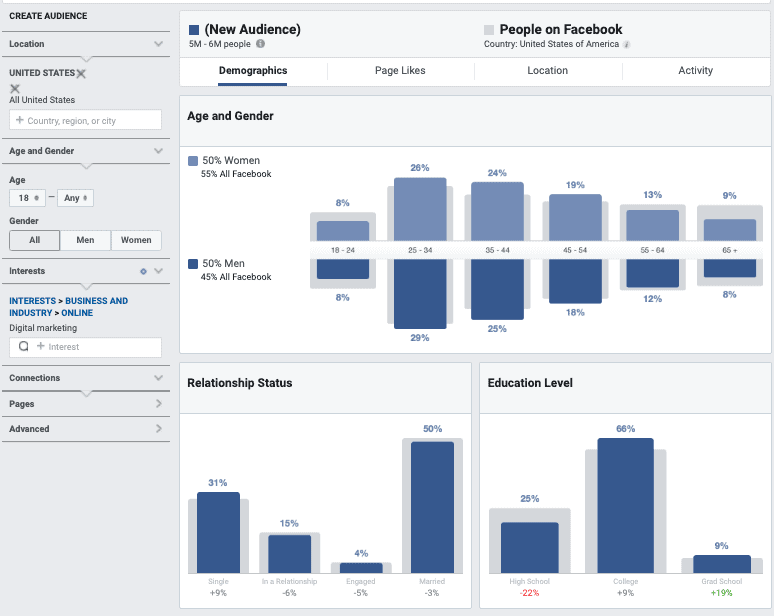
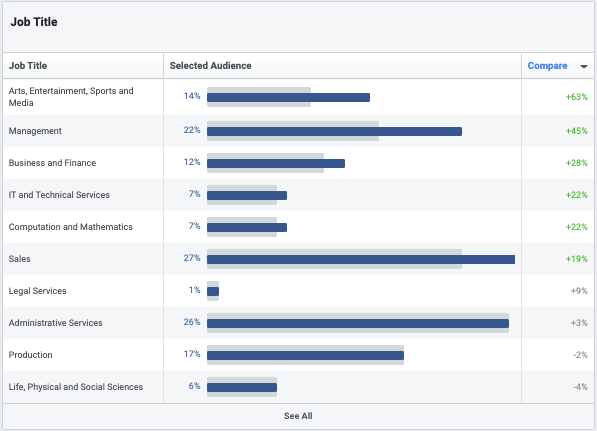
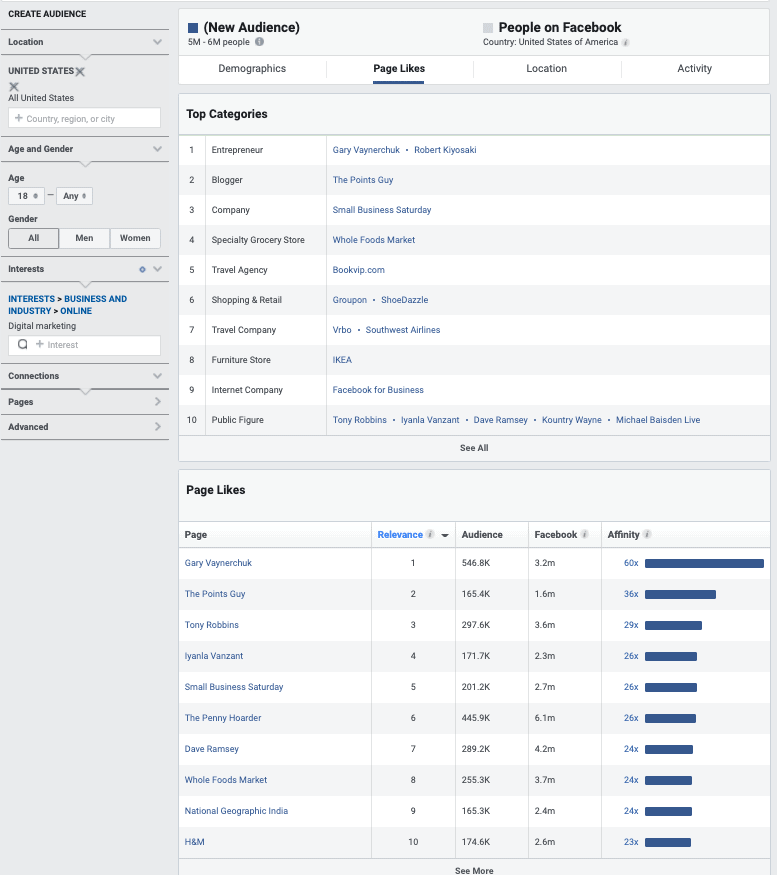
As we can see from the screenshots below, there is a ton of information about these users on Facebook and Google:
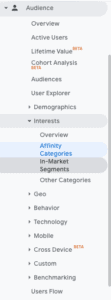
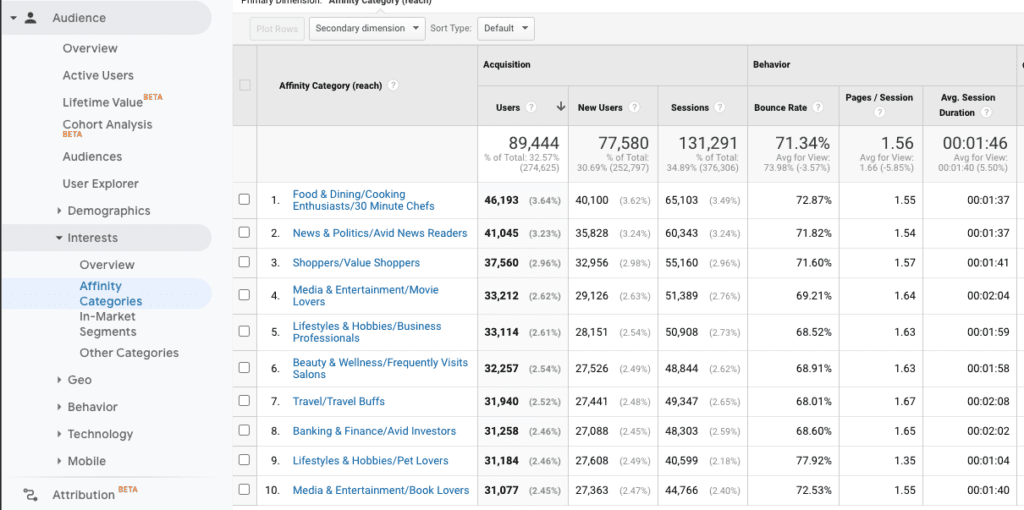
We can use this information to help build a robust persona, it is also useful in targeting paid ads, understanding who is influencing your customers, and identifying things that they find interesting. Your website analytics platform is a great place to start when filling out the WHERE section of the persona and the different sources of information that your target audience uses on a daily basis.
Behavioral Data
Website behavioral data can be used to understand your customer’s journey and how they consume information before making a purchase. This information is crucial to your buyer persona, as it gives you insights into questions that your customers are asking before they purchase a product. If you know the questions people are asking, then you can generate marketing and content campaigns to answer those questions. We always start with the Behavioral Suite in Google Analytics. This information will give you a concise view of how users interact with your website.
Key Google Analytics behavioral data points to focus on:
1. Which pages are getting the most pages views?
2. Is there significant drop-off of users on a specific part of the website?
3. What are the top conversion paths of users on your website?
4. What page is shown in the most conversions?
5. Which page has the highest average time on page?
6. What is the most searched for term on your website?
Other website analytics platforms you can use to reach information about your buyer persona include:
1.Twitter Analytics
2. LinkedIn Analytics
3. Google Ads
4. HotJar
#4 - Search Data
If you want to know what type of information your target audience is searching for online, search data is a great place to start. This data set allows you to better understand your buyers intent, interests, and the context in which they are searching for that information. Search data helps define the challenges and goals of your prospective customer. Search data can be found in a variety of different tools and it can feel a little overwhelming to start. When building out a persona, a simple phased approach including general keyword research and defining the question is ideal.
General Keyword Research
In phase one, we use Google Keyword Planner & Google Trends to research relevant topics.
In this stage, it is best to start by listing out all the keywords you believe your current customers are using to find your website. Google search console can be helpful in getting started. Once you have a list of broad terms you can narrow them down using Google Keyword Planner and Google Trends based on information about search volume and related search terms. Make a list of a few targeted search terms that have relatively high search volume. This list of targeted keywords will help you in defining the question.
Defining the Question
In phase two, our goal is to identify the research queries our ideal buyer persona is using. The best resource to develop these questions is answer the public. Type in the keywords we last researched and answer the public will develop a list of consumer questions that you can use to better define your audiences.
#5 - Sales Team & Customer Service Interviews
Your customer service and sales team interacts with prospective clients on a daily basis, meaning they are valuable contributors in defining your persona. They have a deep understanding of what your customer wants, needs, and where they have pain points. In most organizations, this group of people are a goldmine for information on your prospects. Take advantage of their insights by asking questions in interviews or surveys. These are the seven questions you can ask:
1. What do people need to understand, learn, or know before they convert?
2. What barriers do they have to convert?
3. What objections do they have to converting?
4. What are they worried/researching/talking about before they convert?
5. What is the customers’ primary pain point?
6. Are people aware there is a problem?
7. Are they actively looking for a solution?
Along with the 7 questions above, our team has developed a list of 36 questions that you should be asking your sales team. These questions will help you understand your prospects on a deeper level.
Tips On Building Your Buyer Persona
Take Your Time
We get it, in the current marketing world, marketers have tons of things to do and too few hours to complete them. Like Abraham Lincoln once said, “Give me six hours to chop down a tree and I will spend the first four sharpening the axe,” your buyer persona should be the catalyst to all of your marketing campaigns. Once you have a well-defined buyer persona, marketing ideas, campaigns, copy, creative, messaging, position all become easier to create. So be good to future you and build out a persona that will really help you in the long run.
Research, Research, Research
Don’t guess, know. Thorough research will help you validate assumptions about your audience. Use the tools we discussed to collect data on different parts of your persona. Investigate your data sets to derive insights, facts, and new conclusions.
This is a Living Document
Treat the persona you create as an ever changing document. Consistently challenge previous assumptions and make changes based-off campaign results. At Well-Oiled Marketing, we follow the implement, test, and optimize approach for building our personas. Meaning we implement a persona using the research tactics outlined above, we test the audience targeting, and then we make changes to our persona as needed. We even hold quarterly internal meetings to make sure we are all aligned on personas.

Getting Started
Like with anything at first, building your buyer persona can seem daunting. In this article we provided you with an outline of all the steps we use at Well-Oiled Marketing to create our clients’ buyer personas. The most important thing to remember is that your persona should be the starting point for all things marketing. If you have a question about your customer, reference your persona.
Looking for help on creating or optimizing your buyer persona? Let Well-Oiled Marketing help. Schedule a discovery call today and experience digital marketing made simple.




































































